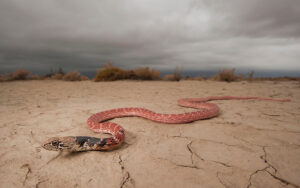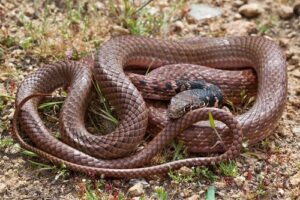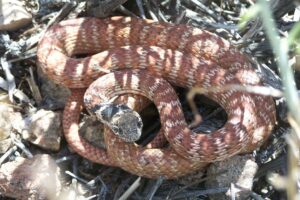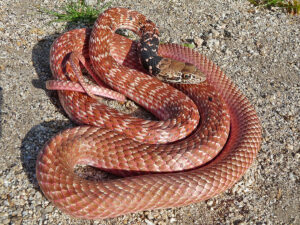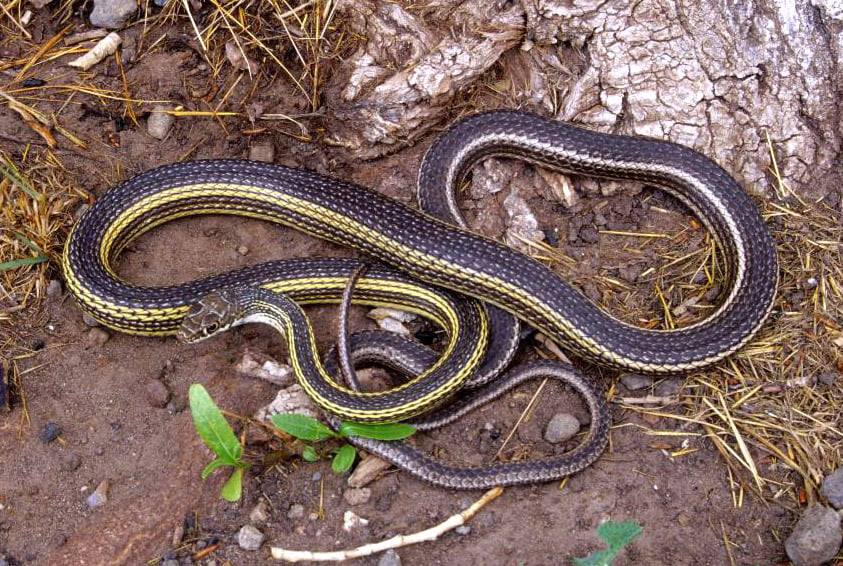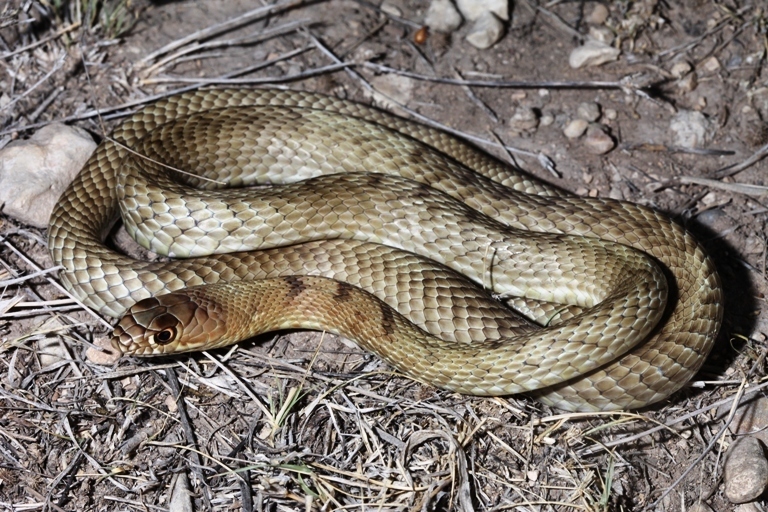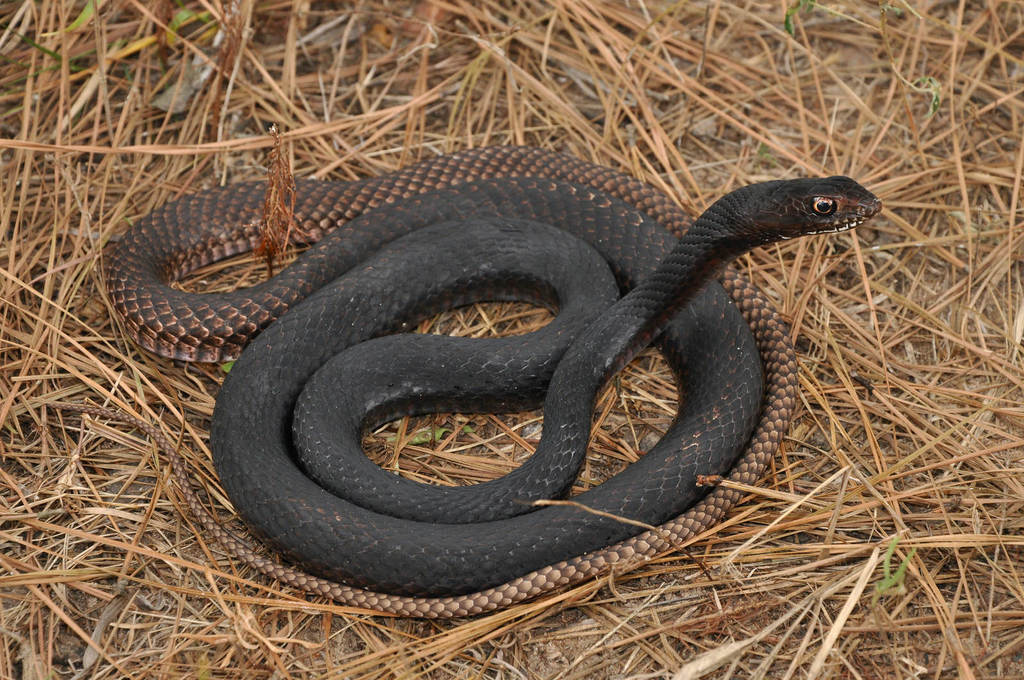The red racer or red coachwhip is a subspecies of the coachwhip or whipsnake. As its name suggests, it is a fast-moving snake that ‘races’ along the ground to escape predation or while hunting for food. It is also adept at climbing trees and bushes. The long, slender body has a smooth, braided appearance like a coachman’s whip. Hence its common name.
Scientific Classifications
- Suborder:Serpentes
- Family:Colubridae
- Genus:Masticophis
- Species:M. flagellum
- Subspecies:M. f. piceus
Conservation Status
Description
Size
It measures between 3 ft and 5.5 ft in length.
Color and Appearance
A saddled or banded pattern with black or dark red blotches is placed on the lighter red-colored body at regular intervals. The color scheme helps it camouflage. It has smooth scales, and there are large scales over its eyes.
The babies resemble the adults in their looks, but their bodies may be lighter shades of brown or tan than red.
Are They Dangerous to Humans
The red racer possesses no venom and is considered harmless to humans. In fact, it is quite skittish around people. If threatened, the colubrid coils its body and vibrates its tail mimicking a rattlesnake to scare away its attacker. If that fails, it uses its fast pace to escape. It is aggressive only on being captured when it attempts to lash out and bite.
Red Racers at a Glance
Distribution
It lives in the southwestern United States (Nevada, California, Utah, Arizona) and northwestern Mexico (Baja California and Sonora).
Habitat
The red racer occurs in deserts, shrublands, grasslands, and rocky, sandy hills. They prefer areas where vegetation is not too dense.
The majorly diurnal snakes can be spotted basking near roads in their habitat.
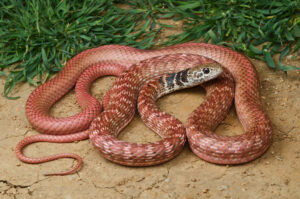
Lifespan
It lives for around 13 years in the wild and 20 years in captivity.
Predators
There are very few predators of the serpent in the wild. It is eaten by great horned owls and coyotes.
Diet
It eats bats, rodents, frogs, snakes, lizards, and birds, locating its prey with its strong sense of smell.
Reproduction
Oviparous (lays eggs that hatch outside the body)
After mating in May, the red racer lays a clutch of 4-20 eggs in early summer. They hatch after 45-70 days.
Source
jamezevanz.com, a-z-animals.com, inaturalist.org, pinglelist.org, rainbowsnakes.tumblr.com

